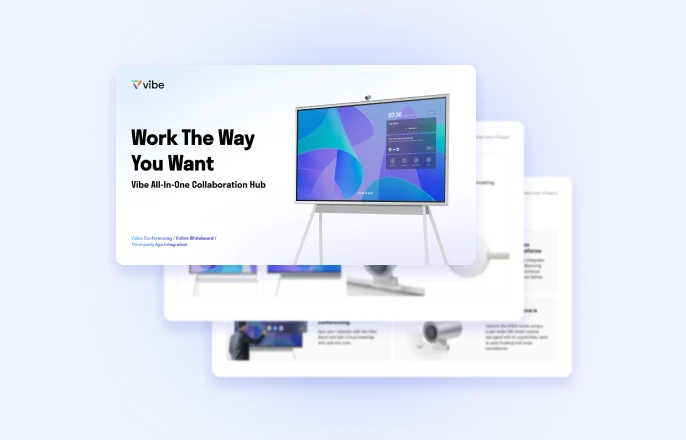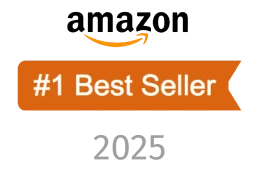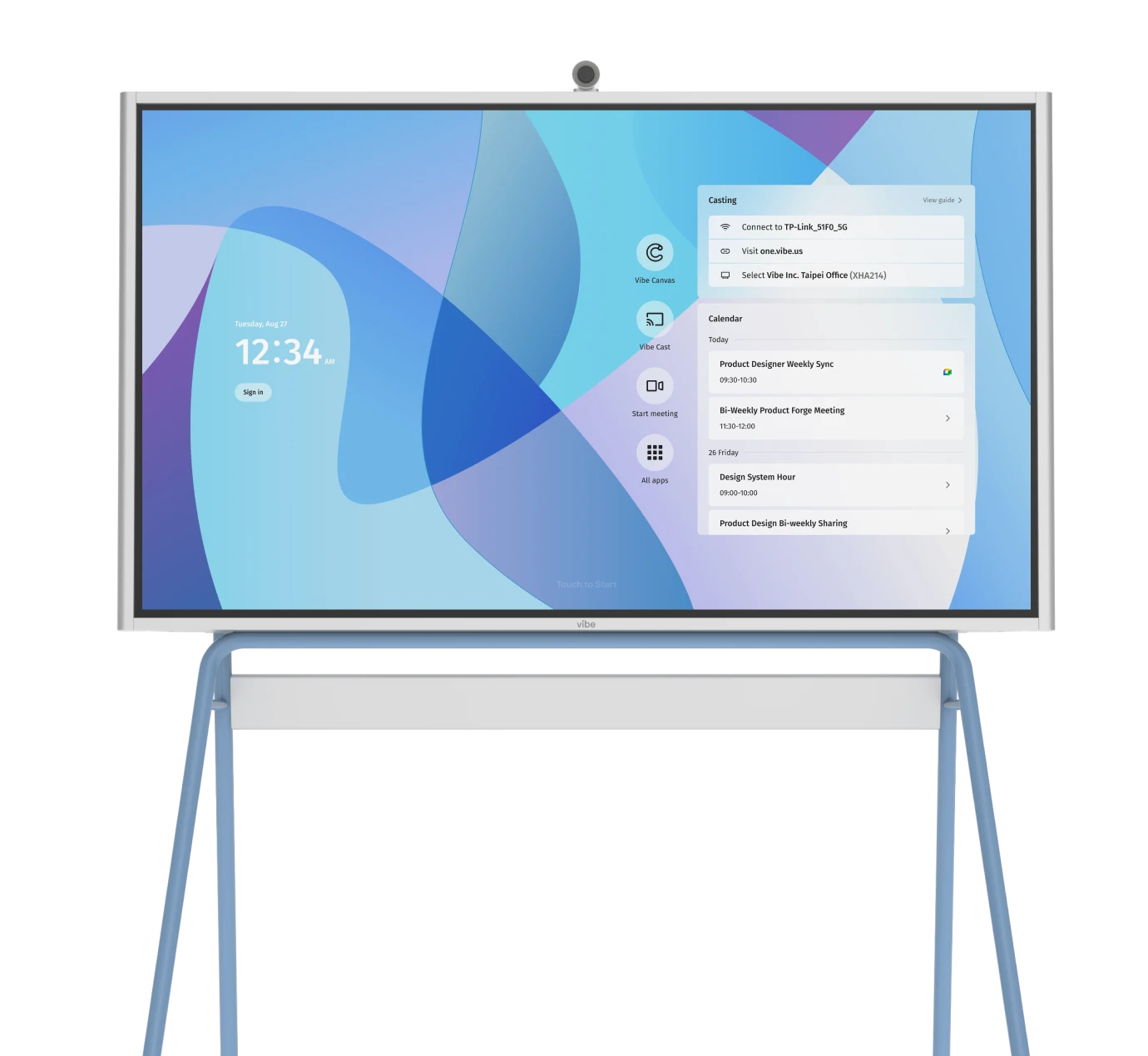The difference between a sales presentation that wins deals and one that falls flat often comes down to engagement. In fact, prospects who engaged with interactive demos achieved a deal conversion rate of 10.1%—3.2x higher than the average rate of 3.1%. [1] While traditional presentations rely on one-way communication, the most successful sales professionals understand that interaction is the key to conversion. When prospects actively participate in your sales presentation, a conversation is created that translates directly into more closed deals.
Interactive presentations don’t just inform; they involve. They draw potential clients in, creating memorable experiences that resonate long after the meeting ends. Whether you’re presenting to a single decision-maker or an entire conference room, the principles of engagement remain the same: make it personal, make it relevant, and make it impossible to ignore.

What is a Sales Presentation?
A sales presentation is more than a simple product demonstration or feature overview. It’s a strategic conversation designed to guide prospects through their buying journey, addressing their specific challenges while positioning your solution as the clear path forward. The most effective sales pitches blend storytelling, data, social proof, and interactive elements to create compelling narratives that speak directly to your audience’s needs.
Modern sales presentations have evolved beyond static slide decks. Today’s winning presentations incorporate real-time whiteboarding, remote collaboration features, live demonstrations, and dynamic content that can adapt to audience feedback. They’re conversations, not monologues—opportunities to build relationships while showcasing value. The goal isn’t just to present information; it’s to create an experience that moves prospects from interest to action.
Essential Components of a Successful Sales Presentation
Before diving into specific tactics, it’s important to understand the foundational elements that every winning sales presentation must include. These components work together to create a cohesive, persuasive experience that will resonate with your audience and drive results.
- Compelling value proposition – Articulate exactly what makes your solution different from competitors and why that difference matters to your prospect. This goes beyond listing features to focus on the specific outcomes and benefits your audience will experience.
- Deep audience research – Demonstrate deep knowledge of your prospect’s industry challenges, business goals, and current pain points. This means researching their company, understanding their market position, and speaking their language throughout the presentation.
- Strategic storytelling – Weave compelling narratives throughout your presentation using real customer success stories, relatable scenarios, or case studies that mirror your prospect’s situation. Stories create emotional connections and make abstract benefits concrete and memorable.
- Professional visual design – Design clean, professional slides with minimal text, impactful graphics, and visual elements that support your message rather than distract from it. Use charts, infographics, and images that help prospects quickly grasp complex concepts.
- Credible social proof – Include credible evidence of your solution’s effectiveness through customer testimonials, detailed case studies, recognizable client logos, or quantifiable results from similar companies. This builds trust and reduces perceived risk in the buying decision.
- Outcome-focused messaging – Focus on the tangible outcomes your product delivers rather than just its features. Explain how your solution will improve their processes, save time or money, increase efficiency, or solve their specific problems.
- Clear next steps – Conclude with a specific, actionable next step that moves the sales process forward, such as scheduling a demo, starting a trial, or setting up a follow-up meeting. Make it clear, compelling, and easy to say yes to.
- Authentic rapport building – Build genuine rapport by finding common ground, showing authentic interest in their business, and tailoring your communication style to match their preferences. This creates trust and makes prospects more receptive to your message.
These components form the foundation of every successful sales and client presentation. However, simply having the right ingredients isn’t enough! You need to know how to combine them effectively.
10 Tips for Making Interactive Sales Presentations that Convert
The following tips will walk you through exactly how to bring the components above to life in ways that captivate your audience and drive conversions.
Pre-Presentation Preparation
1. Practice, But Don’t Memorize Your Delivery
Preparation is crucial for sales presentation success, but over-rehearsing can make your delivery feel robotic and unnatural. Instead of memorizing scripts, focus on understanding your content deeply enough to present it comprehensively while remaining flexible enough to adapt based on audience reactions.
Practice handling common questions, technical difficulties, and unexpected interruptions. Role-play different scenarios with colleagues to build confidence in your ability to navigate various situations during your meeting. The goal is to be thoroughly prepared while maintaining authenticity and responsiveness.
Record yourself practicing your presentation to identify areas for improvement. Pay attention to your pace, energy level, and clarity. Practice using any technology or interactive elements you plan to incorporate to ensure smooth execution during the actual presentation.

2. Customize Everything for Your Audience
Generic sales presentations are forgettable. Memorable presentations speak directly to the specific needs, challenges, and goals of the people in the room. Before every presentation, invest time in research. Understand your prospect’s industry trends, recent company news, and competitive landscape.
Customization goes beyond simply inserting the prospect’s logo into your slides or knowing your POC’s names. It means adapting your examples, adjusting your language, and focusing on the specific outcomes that matter most to this specific prospect. When prospects see their own challenges reflected in your pitch, they pay closer attention and engage more deeply with your content.
Consider creating dynamic content that can be adjusted in real-time based on audience reactions. If a particular point resonates strongly, be prepared to dive deeper. If something doesn’t land as expected, have alternative examples ready. This flexibility transforms your sales presentation from a rigid script into a responsive conversation.
Opening and Discovery
3. Open With a Compelling Story
Your sales presentation’s opening moments are critical. Instead of launching into company history or product features, start with a story that immediately captures attention and establishes relevance. Choose a narrative that mirrors your prospect’s situation, perhaps a customer who faced similar challenges and achieved remarkable results with your solution.
Effective storytelling in a sales presentation isn’t just about engagement; it’s about connection. When you share a relatable scenario, prospects begin to envision themselves in similar circumstances. They start thinking, “That sounds like our situation” or “We face that exact problem.” This emotional connection sets the stage for everything that follows in your presentation.
The best opening stories are specific, brief, and outcome-focused. Avoid generic success stories that could apply to anyone. Instead, choose examples that reflect your prospect’s industry, company size, or specific challenges. This targeted approach demonstrates that you understand their world and have helped others navigate similar situations successfully.
4. Start by Exploring Their Pain Points
Too many sales presentations jump straight into solution mode without first establishing the problem. This approach misses a crucial opportunity to build consensus around your prospect’s challenges. Instead, begin by exploring their pain points through thoughtful questions and audience/industry insights.
When you start by discussing problems rather than solutions, you accomplish several important goals. First, you demonstrate understanding of their situation. Second, you get prospects nodding in agreement, creating positive momentum. Third, you establish the context that makes your solution relevant and necessary.
Use data, industry trends, or thought-provoking questions to surface pain points. Ask about their current processes, frustrations, and goals. Listen carefully to their responses and reference them throughout your sales pitch. This approach transforms your presentation from a product pitch into a collaborative problem-solving session. How are clients going to trust your solution approach if they don’t believe you have a firm understanding of the problem that needs solving?

Presentation Delivery and Engagement
5. Turn the Presentation Into a Dialogue
The most successful sales presentations run more like conversations than presentations. Instead of talking at your audience for the entire session, create opportunities for frequent dialogue throughout. Ask questions, seek opinions, and encourage discussion about the topics you’re covering.
Regular interaction serves multiple purposes in your pitch. It keeps your prospects interested, provides valuable insights into their thinking, and helps you adjust your approach in real-time. The more prospects actively participate in the conversation, the more they become invested in the outcome.
Structure your presentation with natural pause points where you can invite questions or feedback. Use phrases like “What’s your experience with this type of challenge?” or “How does this align with your current goals?” These questions transform your monologue into a collaborative exploration of solutions. Make sure to plan for the time needed for this type of open dialogue when scheduling and preparing your presentation.
6. Make It Visually and Physically Interactive
Static slides and one-way presentations have become relics of the past. Today’s most effective sales presentations incorporate interactive elements that engage through multiple avenues and encourage active participation. Consider using digital whiteboards, live polling, or collaborative annotation tools to make your presentation truly interactive.
Interactive elements serve multiple purposes in a sales presentation. They break up the monotony of traditional slide presentations, keep the audience’s attention focused, and create memorable moments that prospects will remember long after the meeting ends, when they are in decision-making meetings.
Technology can be a powerful enabler of interaction, but it doesn’t have to be complex. Simple presentation tools like shared screens where prospects can navigate through options, interactive charts they can manipulate, or digital collaborative spaces where they can add their own input can dramatically increase engagement levels in your sales presentation.
7. Demonstrate With a Live, Hands-On Walkthrough
Nothing beats seeing your solution in action. While screenshots and recorded video demos have their place, live demonstrations of your solution create the most powerful impact in a sales presentation. They show rather than tell, making benefits tangible and addressing concerns in real-time.
Plan your live demonstration carefully. Rather than showing every feature, focus on the specific capabilities that address your prospect’s most pressing needs. Walk through realistic scenarios that mirror their actual use cases. If possible, invite prospects to participate in the demonstration, letting them experience your solution firsthand during the meeting.
Prepare for technical difficulties by having backup plans ready. Test all technology beforehand and have alternative demonstration methods available. The goal is to briefly but powerfully showcase your solution’s capabilities while maintaining professionalism and confidence.

Building Credibility and Differentiation
8. Drop in Social Proof at Key Moments
Social proof is most effective when it appears at strategic moments throughout your sales presentation, not just as a dedicated section at the end. When you address a common concern or highlight a particular benefit, immediately follow up with a relevant testimonial or case study that validates your claim.
This approach makes social proof feel natural and relevant rather than forced. Instead of saying, “Here are some of our happy customers,” you can say, “When Company X faced this exact challenge, they saw a Y improvement within three months.” This contextual use of social proof naturally strengthens every point you make.
If possible, choose social proof examples that closely match your prospect’s situation. Industry-specific case studies, company size similarities, or geographic relevance all increase the impact of social proof in your argument. The more your prospects can see themselves in your success stories, the more compelling those stories become.
9. Highlight Competitive Differentiators
Your prospects are likely considering multiple options, so your sales presentation must clearly articulate what sets you apart, your unique value proposition. However, competitive differentiation is most effective when it’s shown rather than simply stated. Use side-by-side comparisons, live demonstrations of unique features, or specific examples that highlight your advantages.
Avoid negative comparisons that disparage competitors. Instead, focus on your unique strengths and the specific value they provide. Frame differentiators in terms of benefits to the prospect rather than just feature comparisons. This approach makes your competitive advantages more compelling and memorable in your pitch.
Be prepared to address competitive questions directly and honestly. Prospects appreciate transparency, and acknowledging areas where competitors might have advantages while emphasizing your unique strengths builds credibility throughout your sales presentation.

Closing and Next Steps
10. Clearly State What Happens Next
Every effective sales presentation must end with a clear, specific call to action. Avoid vague endings like “Let’s stay in touch” or “I’ll follow up soon.” Instead, propose concrete next steps that move the sales process forward while the momentum from your presentation is still strong.
Your call to action should be logical, low-risk, and valuable to the prospect. This might be a custom demonstration, a pilot program, a detailed proposal, or a meeting with technical stakeholders. The key is making the next step feel like a natural progression rather than a high-pressure sales tactic.
Summarize the key points that were agreed upon during your meeeting, then connect those agreements to your proposed next steps. This approach reinforces the value you’ve demonstrated while making it easy for prospects to say yes to continued client engagement. Connect the next steps to the outcome they will produce to help your prospects understand the value of moving forward.
Transform Your Sales Presentations Starting Today
Mastering these 15 presentation tips transforms how you connect with prospects and close more sales. The most successful sales professionals understand that today’s buyers expect interactive experiences rather than one-way pitches, and when you combine thorough preparation with engaging techniques like storytelling, real-time collaboration, and strategic audience interaction, you create memorable sessions that move prospects through your sales funnel. By implementing these strategies gradually and focusing on genuine engagement over polished perfection, you’re positioning yourself to win more business, build stronger client relationships, and achieve the kind of sales results that make every presentation a revenue opportunity.
Close More Deals with the Vibe Board S1
The Vibe Board S1 transforms ordinary sales presentations into extraordinary interactive experiences that captivate prospects and drive higher conversions. Its intuitive multi-touch interface and seamless connectivity enable live demonstrations and collaborative annotation in real-time, turning your presentation into a dialogue rather than a monologue. When you’re exploring pain points with prospects, the Vibe Board lets you capture their input directly on screen through digital whiteboarding, creating visual maps of their challenges that make your solutions more tangible and compelling. Clients can quickly and easily connect to your shared workspace to add feedback in real-time from their personal devices without downloading any applications, making it physically and visually interactive.
The board’s advanced presentation capabilities support everything from hands-on product walkthroughs to collaborative planning sessions, allowing you to demonstrate with live, interactive elements rather than static slides. With wireless screen sharing, you can customize everything for your audience in real-time, adapting your examples and diving deeper into specific points based on their reactions. The professional-grade display quality ensures your visual storytelling is compelling, while interactive tools like live polling and collaborative annotation keep prospects engaged throughout your pitch. Whether you’re highlighting competitive differentiators through side-by-side comparisons, incorporating social proof through multimedia case studies at key moments, or building solutions together using whiteboarding features, the Vibe helps you deliver presentations that prospects remember long after the meeting ends.
Ready to elevate your sales presentations and win more business? Experience the Vibe Board S1 in action—schedule your personalized demo today and see the difference for yourself.
 Sales professional presenting to a group using the Vibe Board S1 to deliver an interactive and engaging client pitch.
Sales professional presenting to a group using the Vibe Board S1 to deliver an interactive and engaging client pitch.




-1sbltxxq4FYxHrXrwJVLsCDNsXpqNa.webp)
-5Zp0pmSytvcuYDVs1LvuwplKuRneK0.webp)
